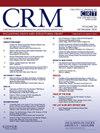Safety and efficacy of the unilateral, suture-based, dry-closure technique in percutaneous trans-axillary aortic valve implantation
IF 1.6
Q3 CARDIAC & CARDIOVASCULAR SYSTEMS
引用次数: 0
Abstract
Background
Transaxillary transcatheter aortic valve implantation (TAx-TAVI) is the most used alternative access when severe iliofemoral disease renders transfemoral access infeasible. Compared to surgical transaxillary access, a true percutaneous approach using vascular closure devices (VCD) has advantages but can be challenging. Herein, we describe the impact of the “unilateral, suture-mediated, dry-closure technique” on vascular safety and efficacy in patients undergoing true percutaneous TAx-TAVI.
Methods
A total of 77 patients undergoing percutaneous TAx-TAVI were categorized into a cohort before (C1, n = 40) and after (C2, n = 37) implementation of the suture-based dry-closure technique using an upstream occlusion balloon. In C1, arteriotomy closure mainly consisted of plug-based VCD. The primary (safety) endpoint was occurrence of major or minor access-site related vascular complications in accordance with Valve Academic Research Consortium 3 criteria. Technical success rates (at exit from procedure room) were used to assess procedural efficacy.
Results
The mean age of the study population was 79 ± 7 years and 49 % were male. From C1 to C2, the Society of Thoracic Surgeons Predicted Risk of Mortality reduced numerically (from 4.1 to 3.6 %, p = 0.060). Procedures became more streamlined with use of local anesthesia in 100 % (83 % in C2) and the left axillary artery in 76 % (68 % in C2). The primary (safety) endpoint occurred in 34 % of the patients, but reduced from 45 % in C1 to 16 % in C2 (p = 0.011). Concurrently, there was a reduction in VCD failure (45 vs 14 % [incomplete arteriotomy closure in all 5 cases], p = 0.003), bleeding complications (45 vs 14 %, p = 0.003) and bailout vascular surgery/stenting (40 % vs. 16 %, p = 0.021). Technical success was 80 % in C1 and 87 % in C2 (p = 0.45) and median length of hospital stay reduced from 5 (25th–75th percentile: 2–7) to 3 days (25th–75th percentile: 2–5, p = 0.080).
Conclusions
The unilateral, suture-based dry-closure technique facilitates safe and effective access management in high-risk patients selected for percutaneous TAx-TAVI procedures.
单侧、缝合为基础、干闭技术在经皮经腋窝主动脉瓣植入术中的安全性和有效性。
背景:经腋窝经导管主动脉瓣植入术(TAx-TAVI)是当严重髂股疾病使经股通道不可行的最常用的替代通道。与经腋窝手术相比,使用血管关闭装置(VCD)的真正经皮入路具有优势,但可能具有挑战性。在本文中,我们描述了“单侧、缝合介导、干缝合技术”对真正经皮TAx-TAVI患者血管安全性和有效性的影响。方法:将77例经皮TAx-TAVI患者分为采用上游封堵球囊实施基于缝线的干缝合技术前(C1, n = 40)和后(C2, n = 37)两组。在C1区,动脉切开术主要是基于导管的VCD。主要(安全性)终点是根据瓣膜学术研究联盟3的标准,发生主要或次要的与通路部位相关的血管并发症。技术成功率(退出手术室时)用于评估手术效果。结果:研究人群的平均年龄为79±7岁,男性占49%。从C1到C2,胸外科学会预测的死亡风险从数字上降低(从4.1%到3.6%,p = 0.060)。100% (C2组83%)和76% (C2组68%)使用局部麻醉后,手术流程变得更加简化。主要(安全)终点发生在34%的患者中,但从C1组的45%降至C2组的16% (p = 0.011)。同时,VCD失败率(45%比14%[5例动脉不完全闭合],p = 0.003)、出血并发症(45%比14%,p = 0.003)和紧急血管手术/支架植入术(40%比16%,p = 0.021)均有所降低。C1和C2的技术成功率分别为80%和87% (p = 0.45),中位住院时间从5天(25 -75百分位数:2-7)减少到3天(25 -75百分位数:2-5,p = 0.080)。结论:单侧、基于缝合线的干缝合技术可为选择经皮TAx-TAVI手术的高危患者提供安全有效的通路管理。
本文章由计算机程序翻译,如有差异,请以英文原文为准。
求助全文
约1分钟内获得全文
求助全文
来源期刊

Cardiovascular Revascularization Medicine
CARDIAC & CARDIOVASCULAR SYSTEMS-
CiteScore
3.30
自引率
5.90%
发文量
687
审稿时长
36 days
期刊介绍:
Cardiovascular Revascularization Medicine (CRM) is an international and multidisciplinary journal that publishes original laboratory and clinical investigations related to revascularization therapies in cardiovascular medicine. Cardiovascular Revascularization Medicine publishes articles related to preclinical work and molecular interventions, including angiogenesis, cell therapy, pharmacological interventions, restenosis management, and prevention, including experiments conducted in human subjects, in laboratory animals, and in vitro. Specific areas of interest include percutaneous angioplasty in coronary and peripheral arteries, intervention in structural heart disease, cardiovascular surgery, etc.
 求助内容:
求助内容: 应助结果提醒方式:
应助结果提醒方式:


